Launching a new electronic adult product is exciting, but the maze of US regulations can be daunting. You worry that one missed step with compliance could lead to costly fines or blocked shipments, jeopardizing your brand. Understanding the rules is your first step toward a successful launch.
To ensure FCC compliance, start by determining if your product is an "intentional" or "unintentional" radiator of radiofrequency energy. Most electronic toys fall under FCC Part 15 rules. You must follow the correct authorization procedure—Verification, Declaration of Conformity, or full Certification—which often involves testing at an accredited lab. Finally, ensure your product is correctly labeled with the FCC mark and, if required, an FCC ID.
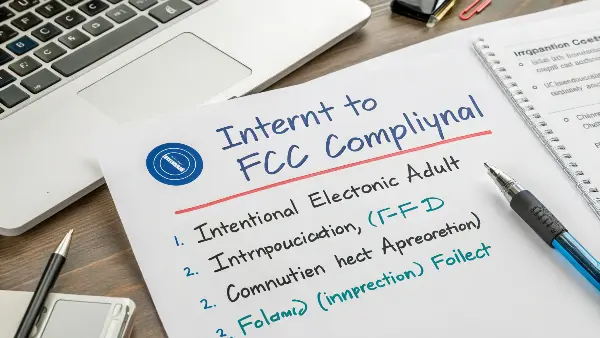
This process might seem overwhelming at first glance. As a manufacturer, I’ve navigated these waters many times, and it’s not as complex as it sounds once you break it down. It’s a critical part of bringing a safe and reliable product to the market, and getting it right from the start saves immense time and money. It’s about building trust with your customers and ensuring your product works perfectly without interfering with anything else.
Let’s walk through the key questions you need to answer to master FCC compliance for your brand.
What does the FCC rule for electronics?
You’ve heard the term "FCC" thrown around, but it feels like a vague government acronym. You’re not sure what it governs or why it matters for your adult products. This uncertainty can be risky. Let’s clarify what the FCC actually does and why it’s important for you.
The Federal Communications Commission (FCC) regulates electronic devices that create and emit radiofrequency (RF) energy. Its main goal is to prevent these devices from interfering with wireless services like radio, television, cell phones, and emergency communications. If your product has an electronic circuit that oscillates, it falls under FCC jurisdiction.
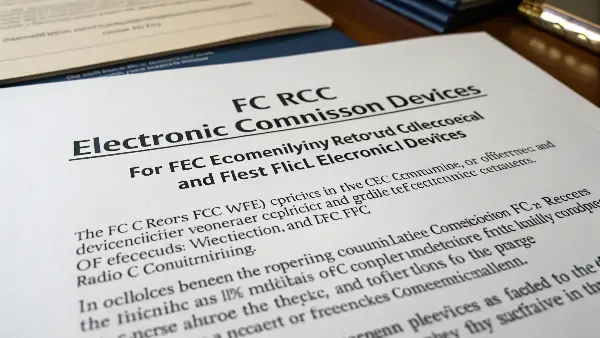
Think of the FCC as a traffic cop for the airwaves. Every day, countless devices send out invisible signals. Without rules, these signals would crash into each other, causing chaos. Your phone call might get dropped, your TV picture might get fuzzy, or—most importantly—an ambulance’s radio could fail. The FCC’s job is to make sure every electronic product "plays nicely" and stays in its own lane.
When I first started PrivyPlay, we had to quickly become experts in this. The key is understanding that nearly every modern electronic device emits some level of RF energy, even if it’s not designed to. This leads to two main categories of devices that the FCC cares about:
Unintentional Radiators
These are devices that are not designed to communicate wirelessly, but they still produce radio noise as a byproduct of their regular operation. The digital circuits, processors, and even the electric motor in a vibrator create these emissions. For example, a simple rechargeable massager with a USB port and a control chip is an unintentional radiator. While it’s not sending out a Bluetooth signal, its internal components are "leaking" RF energy that needs to be kept within strict limits.
Intentional Radiators
These are devices specifically designed to use the radio spectrum to communicate. This is the category for all your app-controlled, remote-controlled, or wireless charging adult toys. A vibrator that connects to a smartphone app via Bluetooth is a classic example of an intentional radiator. The rules for these devices are much more stringent because they are actively broadcasting a signal.
Here is a simple breakdown to help you categorize your product:
| Device Type | FCC Classification | Example Adult Product | Key Requirement |
|---|---|---|---|
| Basic vibrator with a motor and battery | Unintentional Radiator | A simple bullet vibrator with different speed settings but no remote. | Must not emit RF energy above the limits set in FCC Part 15, Subpart B. |
| Rechargeable massager with USB-C | Unintentional Radiator | A wand massager that plugs in to charge and has a digital control board. | The charging and control circuits must meet Part 15, Subpart B limits for Class B devices. |
| App-controlled Kegel trainer | Intentional Radiator | A Kegel exerciser that syncs with a smartphone app via Bluetooth to track progress. | Must meet the strict transmitter rules in FCC Part 15, Subpart C. Requires full Certification and an FCC ID. |
| Remote-controlled couples’ toy | Intentional Radiator | A vibrator that is controlled by a separate, handheld wireless remote. | The remote and the toy both act as intentional radiators and must be certified under Part 15, Subpart C. |
Understanding which category your product falls into is the first and most critical step. It dictates the entire testing and authorization process you’ll need to follow.
What are the FCC Part 15 rules?
You know the FCC is important, but what are the actual rules you need to follow? Hearing "Part 15" sounds like complex legal jargon that’s hard to apply to your business. Fearing the complexity, you might ignore it, but that’s a mistake. Let’s demystify Part 15.
FCC Part 15 is the primary regulation for most consumer electronics, including adult toys. It establishes strict limits on the amount of RF interference a device can legally produce. It is built on two core principles: your device must not cause harmful interference to other services, and it must accept any interference it receives from other devices.
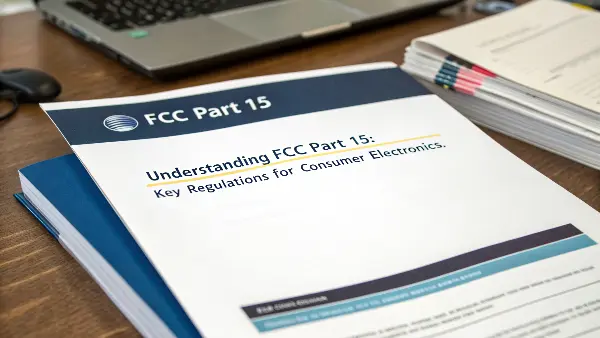
When we source or design a new product, Part 15 is our bible. It’s not about judging the function of the product, only its electronic emissions. It’s divided into different sections, but for adult product brand owners, two are most important: Subpart B and Subpart C.
The Two Golden Rules of Part 15
Before diving into subparts, you need to understand the philosophy behind the rule. Every device subject to Part 15 must comply with these two conditions:
- This device may not cause harmful interference. This means your beautiful new app-controlled toy can’t be so "noisy" that it disrupts your customer’s Wi-Fi network or their neighbor’s garage door opener.
- This device must accept any interference received, including interference that may cause undesired operation. This means your product has to be robust enough to function correctly even when other signals are present, like when a customer is using it near their microwave oven.
These two rules must be printed in the user manual of almost all consumer devices. It’s a fundamental part of compliance.
Diving into the Subparts
Your path through Part 15 depends on whether your device is an unintentional or intentional radiator.
| Aspect | Subpart B (Unintentional Radiators) | Subpart C (Intentional Radiators) |
|---|---|---|
| Who it applies to | Devices with digital electronics that are not meant to transmit RF signals. (e.g., rechargeable massagers, electronic stimulators) | Devices designed to transmit RF signals wirelessly. (e.g., Bluetooth toys, remote-controlled devices) |
| Primary Goal | Limit accidental RF "noise" from circuits and motors. | Regulate the power, frequency, and characteristics of the intended signal. |
| Testing | Measures radiated and conducted emissions to ensure they are below Class B (residential) limits. | Involves much more extensive testing of the transmitter, including output power, bandwidth, and spurious emissions. |
| Authorization | Typically requires Verification or Declaration of Conformity (DoC). | Always requires the most stringent process: Certification. |
| Labeling | May require the FCC logo (for DoC). | Always requires the FCC logo and a unique FCC ID number. |
As a brand owner, the takeaway is this: adding wireless functionality is a major step up in regulatory requirements. A simple massager might only need basic testing that we can manage with good design (this is Verification). But the moment we add a Bluetooth chip to connect it to an app, it jumps to Subpart C and requires a full Certification process with an accredited lab, resulting in an official FCC ID that is publicly searchable. This is a significant difference in both cost and complexity.
What devices are exempt from the FCC?
You look at your product line and wonder, "Maybe my simpler device doesn’t need to go through all this?" The hope of skipping the cost and time of testing is tempting. But assuming you’re exempt when you aren’t can lead to a forced recall, which is far more expensive.
Very few modern electronic adult products are fully exempt from FCC rules. Exemptions are extremely narrow and typically apply only to very simple devices with no digital logic or circuits that oscillate at very low frequencies (below 1.705 MHz). If your product has a motor, a microchip, or a USB charging port, you should assume it is not exempt.
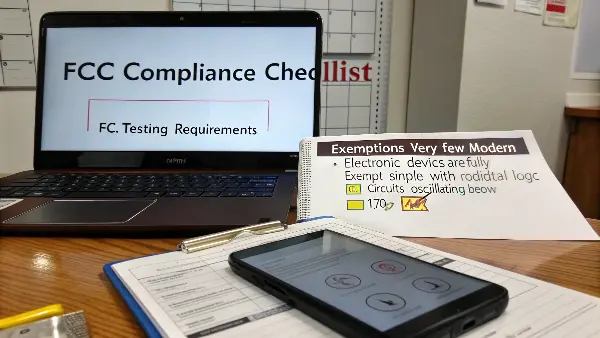
It’s a common and dangerous misconception that "battery-operated" automatically means "exempt." That used to be true decades ago, but today’s technology is different. I once consulted for a startup that thought their simple rechargeable bullet vibrator was exempt. They were wrong. The switching circuit for USB charging created enough RF noise to fall under Part 15 rules. They had to halt sales until they could prove compliance.
Let’s be clear about what might be exempt, and why most adult toys aren’t.
Potentially Exempt Devices
The FCC outlines a few categories that can be exempt from authorization, though they still must not cause harmful interference.
- Incidental Radiators: These are electrical devices that aren’t designed to be electronic at their core. Think of a simple AC motor in a fan or a basic mechanical light switch. No digital logic, no high-frequency operation. This category is almost irrelevant for modern adult products.
- Minimalist Digital Devices: Devices that only use digital logic but run at extremely slow speeds (the clock frequency is below 1.705 MHz or 1,705,000 cycles per second).
- Subassemblies: Components that are sold to another manufacturer to be built into a final product. The final product itself is what needs to be certified.
A Reality Check for Your Product Line
Let’s apply this to common adult product features. The following table can serve as a quick decision-making guide. If you answer "Yes" to any of these questions, your product almost certainly is not exempt.
| Feature Checklist | Does this require FCC Compliance? | Why? |
|---|---|---|
| Does it have Bluetooth, Wi-Fi, or a wireless remote? | YES | It’s an intentional radiator under Part 15, Subpart C. This is the strictest category. |
| Does it charge via a USB port? | YES | The charging circuit and data lines operate at high frequencies, making it an unintentional radiator under Part 15, Subpart B. |
| Does it have a digital display (LED, LCD)? | YES | The circuitry driving the display creates RF noise, making it an unintentional radiator. |
| Does it use a microprocessor or any kind of "smart" chip? | YES | Microprocessors operate at frequencies far above the exemption limit. It is an unintentional radiator. |
| Does it have multiple vibration patterns selected by a button? | YES | The chip that stores and creates those patterns is a digital circuit, making it an unintentional radiator. |
The main takeaway is this: When in doubt, assume you need to comply. The risk of being wrong is too high. The only adult "toys" that are truly exempt are non-electronic ones made of glass, silicone, or metal with no moving parts or batteries. As soon as you add a battery and a motor, you are almost always in the realm of FCC Part 15.
How to know if a device is FCC certified?
Your supplier assures you that the product you want to source is "FCC compliant." That sounds great, but how can you be sure? Taking their word for it is a risk to your business. You need a reliable way to verify their claims and protect your brand from non-compliant inventory.
To truly verify FCC compliance, look for an FCC ID on the product, its label, or in the manual. This ID is a unique code assigned to all certified intentional radiators. You can enter this FCC ID into the FCC’s public online database to see the official Grant of Authorization and review the test reports. This is the definitive proof of certification.
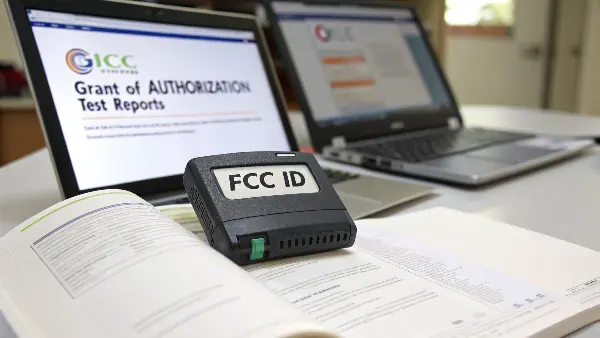
This is a step I never, ever skip when vetting a new manufacturing partner or product. A paper certificate can be faked, but the public FCC database is the ultimate source of truth. Relying on it is a core part of our due diligence at PrivyPlay.
There are different levels of authorization, which changes what you need to look for.
The Three Paths to Authorization
- Verification: This is a self-declaration process for many common unintentional radiators (Part 15, Subpart B). The manufacturer performs the tests (or has a lab do it) and keeps the reports on file, ready to provide them to the FCC if requested. There is no required FCC logo and no FCC ID. This makes it harder to verify externally. You must request the test reports directly from the supplier.
- Declaration of Conformity (DoC): This is a more rigorous self-declaration for more complex unintentional radiators like personal computers. It requires testing at an accredited lab. Products authorized under DoC must have the FCC logo on them. This is less common for most adult toys.
- Certification: This is the most stringent process and is mandatory for all intentional radiators (e.g., Bluetooth and remote-controlled toys). The manufacturer must submit a full application with test reports from an accredited lab to a Telecommunication Certification Body (TCB) for FCC approval. Upon approval, the device is granted a unique FCC ID.
How to Verify an FCC ID
For the products that pose the highest risk of interference—your wireless toys—the process is straightforward. Here’s how you can check an FCC ID yourself in just a few minutes:
- Ask the Supplier for the FCC ID. It will be in two parts, a 3- or 5-character Grantee Code and a Product Code. For example:
XXX-YYYYYYYY. - Go to the FCC Equipment Authorization Search Website. You can easily find it by searching for "FCC ID Search."
- Enter the Grantee Code and Product Code into the search fields.
- Click Search.
If the ID is valid, you will see the official grant document. This document tells you the date it was approved, the frequency range it operates in, and the name of the company that filed it. You can even click on links to see details from the actual test reports.
As a sourcing manager or brand owner, here’s my professional advice: Make this a standard part of your vetting process. If a supplier claims their app-controlled toy is certified, ask for the FCC ID. If they hesitate, or if the ID doesn’t show up in the database, that is a massive red flag. It tells you they either don’t understand the regulations or are not being truthful—and both are dangerous for your business.
Conclusion
Navigating FCC compliance is a non-negotiable step for bringing electronic adult products to the US market. It’s not about the product’s function but its duty to not interfere with critical radio services. By understanding the rules, verifying supplier claims, and ensuring proper testing, you protect your brand.
